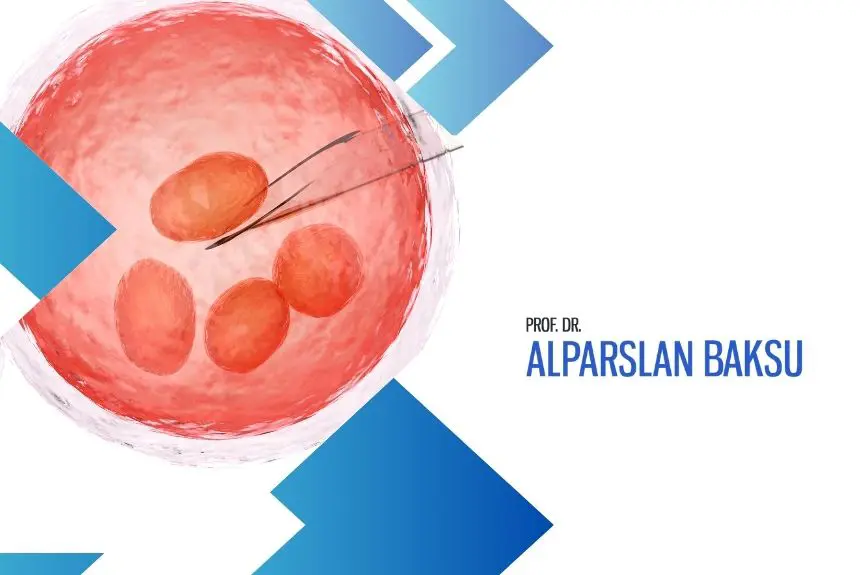INFERTILITY AND ITS CAUSES
The failure of pregnancy to occur despite a couple of reproductive age having regular sexual intercourse for at least a year without using any birth control method is called "infertility". When a couple who has been pregnant or had a child before cannot become pregnant even though they want to, it is called "acquired infertility" (secondary infertility). A woman who has no problems and has a regular sexual life has a 20-25% chance of getting pregnant within a month.
How common is it?
Approximately 10-15% of married couples of reproductive age have infertility. In the examinations carried out on infertile couples, it was determined that the cause was in the man in 40% of the cases, in the woman in about 40%, and in both men and women in 10%. In 10% of couples, no cause can be found. This condition is called unexplained infertility. In developed societies, there is a tendency to postpone the desire for children to older ages due to education and career expectations. In women, ovarian reserves and reproductive capacity begin to decline in the late 30s and early 40s. This situation results in more couples resorting to assisted reproductive methods (in vitro fertilization). In our country, infertility affects not only the couple concerned but also a wide social circle. Especially in cases where the treatment process is prolonged, these couples feel great social and psychological pressure. In fact, this situation has a negative impact on the treatment process.
How is a couple applying for infertility evaluated?
The couple is evaluated together. Their sexual lives and frequency of intercourse are questioned.
1. First of all, a semen analysis (spermiogram) is requested for men.
The semen analysis performed after three days of sexual abstinence is evaluated. The amount is more than 2 ml, the number of cells (sperm) is ml. There should be more than 20 million cells, the mobility rate of the cells should be more than 50%, and the normal cell rate should be more than 30%. After a while, the person who is found to have an abnormality in the semen analysis is asked for a second analysis and is sent to a urology specialist for evaluation.
2. Causes of infertility in women can be examined under 4 headings.
a. Ovulation disorders: They constitute 30-40% of the causes of infertility in women. If the woman's menstrual cycle is normal and her menstrual cycle is between 25-35 days (the period from the first day of one menstrual period to the first day of the next menstrual period), ovulation problems are generally not observed. In order to detect ovulation in women, body temperature monitoring is performed on the 21st-23rd day of menstruation. Methods such as checking the progesterone hormone during pregnancy, taking a sample from the uterus (endometrial biopsy) 3-4 days before the expected menstrual bleeding, and tracking the ovulation cells with ultrasonography can be used. Additionally, FSH, TSH and prolactin hormones need to be checked.

b. Causes related to the ovarian canals (tuba uterina) and the inner abdominal membrane (peritoneum): They constitute 30-40% of the causes of female infertility. The main problems in the ducts occur due to adhesions and blockages due to previous inflammatory diseases, endometriosis or previous surgeries.

Foci and adhesions due to endometriosis in the inner abdominal membrane (peritoneum) also negatively affect pregnancy.

Drug film of the uterus (hysterosalpingography-HSG) and laparoscopy should be performed to evaluate the ducts and diagnose endometriosis.
c. Factors originating from the uterus: Factors of a certain number and size myomas, polyps, intrauterine adhesions (may develop after abortions) and congenital anomalies in the uterus can cause infertility.



To diagnose factors originating from the uterus, uterine medicated film (HSG), ultrasonography and sometimes MRI can be used.
D. Causes originating from the cervix (cervical factor): It is responsible for approximately 5% of the cases. It occurs because some negative factors in this region negatively affect the passage of the male cell (sperm). It is evaluated with some tests performed after sexual intercourse.
to. Cases whose cause cannot be determined: There are also cases of infertility in which no problem can be detected despite all these examinations. These are called cases of “unexplained infertility.” It has a rate of 10%.
How is infertility treated?
Treatment is based on the underlying causes.
1- The treatment of the man is arranged by urologists.
2- Ovulation disorders in women are treated with medications.
a. If the canals are completely blocked and the woman is young and wants more than one child, surgical opening of the canals may be attempted. If this method is not suitable, assisted reproductive techniques (in vitro fertilization) are recommended. endometriosis attached chocolate cysts, adhesions, and other lesions laparoscopy can be treated with.
b. Myomas, polyps, adhesions and congenital anomalies in the uterus can be treated with different surgical techniques.
c. IUI is recommended for problems arising from the cervix.
D. In cases of infertility of unknown cause, insemination or in vitro fertilization treatments are also recommended.
Factors such as the woman's age, duration of infertility, and ability to tolerate the treatment process play a role in determining the treatment method. In cases of long-lasting infertility with unknown cause, there is intense psychological pressure on couples. This negatively affects the treatment process. The best example of psychological pressure is that these couples can spontaneously have children a few years after they no longer have any expectations of having children. In fact, couples who have been treated for years and lost hope can have children on their own after a while.



Leave a Reply